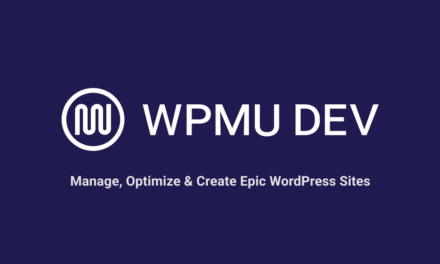When I think about some of my favorite experiences with companies, there’s one common thread that ties them all together: trust. Without trust, I don’t know that I could ever relax enough to allow an online company to provide me with a product or service.
Maybe that’s just me, though I think a lot of people feel nervous every time a Chipotle worker sets out to make your order or the body shop repairs your car. Amirite?
One of the obstacles we often face in building sites for digital companies is how to establish trust with a prospective customer we’ll never see face-to-face. There’s no reading of the body language, no small talk about the weekend, and no way to show them how clean and organized our premises are.
We have to rely solely on how well our website conveys trust.
Continue reading, or jump ahead using these links:
A high-quality design, well-built website, and beautifully crafted content are all hallmarks of a trustworthy business and website. The WPMU DEV Blog regularly covers ways to achieve this, from improving speed and security with a CDN to converting to a mobile-first design—each of which is important in its own right.
But sometimes your visitors need something that feels a little more tangible, something that proves your company doesn’t just exist within the four walls of their viewing device. They want to know there are people behind the company they can trust to provide their product or service, and that they’ll be there if or when an issue or question arises.
That’s why I want to suggest the addition of trust marks to WordPress websites. If trust plays a major role in your visitors’ decision-making process, it only seems logical that you would want to offer up proof of your organization’s reputability and to do so with the tools you already have at your disposal.
Trust Marks That’ll Boost Your WordPress Site’s Credibility
Typically, when the word “trust mark” is used, it refers to the kinds of security badges and logos you’d see on e-commerce websites. According to Techopedia:
…a trustmark gives confidence to customers and indicates to them that it is safe to do business with the website displaying it.
But I’d like to generalize that definition a bit more as I think trust marks are useful for all websites and not just with respect to security. If your ultimate goal is to increase visitors’ confidence so they convert, then why not embrace the use of any trust mark that demonstrates that?
Leadership success expert Brian Tracy once said, “The glue that holds all relationships together… is trust, and trust is based on integrity.” I think it’s the latter half of that statement that merits a closer look today.
If you want to convey a stronger sense of integrity through trust marks, keep in mind that they need to be relevant and recognizable. Take a look at the Econsultancy survey on trust seals, for instance. The factors that played the largest role in gaining a customer’s trust were fairly broad:
- Security trust marks (like the Verisign logo)
- Professional-looking web designs
- Fast-loaded pages
- Selling well-known brand name products
- Referrals from friends or family
- Inclusion of contact details
At the end of the day, what it really boils down to is transparency and quality. If you can deliver on both of these and use trust marks to provide that proof, I think you’ll succeed in increasing conversions on your site.
Below, I’ve broken out the top 10 trust marks every WordPress website should be using. If you don’t have any of these just yet, don’t sweat it. As you grow your customer base and business, these will fall into place and you can update your WordPress site when you’re ready.
1. Security Seals

When you think of a trust mark, a security seal is probably the first thing you envision. How you choose which security seal to place on your site will depend on the type of security protection you need. There are payment processing ones like PayPal’s badges, which make sense if you accept credit card information.
For websites that deal in the exchange of personal information, however, you may have something like McAfee SECURE or the Verisign Secured seal.
It’s important to have a plan for how you’re going to protect site visitors as well as the information they willingly provide to you. In their minds, it’s even more important that you provide them with proof of that security so they can feel at ease in taking that next step. Security seals will help you do this.
2. HTTPS

If you missed the recent post from Jenni McKinnon on SSL certificate authorities, I’d suggest you check it out. An SSL certificate—and the resulting HTTPS web address—provides business websites with a very tiny, but important trust seal. Although it may have previously gone unnoticed, I think Google Chrome’s latest update is going to change all that.
3. Third-Party Logos

I know there used to be some debate in the past about whether or not it makes sense to include third-party logos on a website—after all, won’t another logo distract from your own? But I think as we explore this idea that visitors want proof that they can trust your site, it’s clear that additional logos that are well-recognized and already command respect could only help your website’s reputation.
There are a number of avenues you can take with this. You could include partner logos so customers know that your outsourced work is handled by professionals. You could include customer logos so that customers see that you’ve worked with reputable brands and want that same type of service on their side as well. You could also include locally recognized logos like the Chamber of Commerce or other organizations to which your small business belongs.
4. Accolades

For this particular trust mark, I’m going to suggest two ways you can approach this one.
The first is for your own site. If your WordPress design work has been featured in an industry publication or if you’ve won an award for the work you’ve done, your site would be a great place to show that off. This can also be used for your clients’ sites, but I especially like the idea of developers and designers proudly proclaiming their wins on their own sites.
The second way to use this trust mark is to provide proof of your company’s certifications. This is something that’s particularly useful for a company or individual that must have certain technical skills in order to do their job.
5. Customer Reviews

Social proof is a big deal for online consumers. As I noted recently about local SEO, “74% of consumers are more likely to trust a local company if they find positive online reviews of it from other consumers.” By willingly showing reviews and ratings from previous customers, you’re helping instill that confidence they need to convert.
That’s really what these trust marks boil down to anyway when you think about it. Visitors want you to show them that your word isn’t the only thing they can trust in. If you can include a reviews and rating widget from a site like Yelp, that would be even better so there’s no question about the validity of your customer feedback.
6. Customer Testimonials

On a related note, it’s always helpful to include actual quotes and winning use cases from previous customers, when possible. Testimonials are especially powerful when you pair them with names and photos of your customers, so visitors get a sense of the kinds of clients you’ve helped in the past.
Case studies are great too—though they do take more work to put together—since they give you an opportunity to quantify your successes.
7. Social Media Widgets

Integrating social media on your website is a best practice, in general. In addition to promoting further engagement between your brand and visitors, it also serves as an additional trust mark.By including links to all your social media pages and even embedding full widgets with live posts and images onto your site, you can show visitors that your brand remains actively involved everywhere it matters.
By including links to all your social media pages and even embedding full widgets with live posts and images onto your site, you can show visitors that your brand remains actively involved everywhere it matters.
8. About Page

Although this one doesn’t make use of logos or other trust seals your visitors will connect with external reliable sources, the About page is an important trust mark all on its own. There’s a lot you can glean about a company by looking at the content on an About page. Without information on a company’s origins, main headquarters, or the people behind the company (with matching photos), your visitors might wonder who exactly is behind this.
9. Multi-Channel Contact

One of the most important things to do before building a website is to know how your client (or you, if it’s for your site) plans to manage their business. This means knowing how visitors can reach out and devising various contact channels throughout the website to accommodate those requests. Contact points to consider include contact forms, live chat, as well as including your company’s phone, email, and maybe even mailing address.
Again, this is similar to the About page in that you might not associate a page or contact forms with trust marks, but they do indeed serve a similar purpose. By offering visitors a visible pathway through which they can reach out, they don’t have to worry about where the company is based, who is really behind the site and if their requests will even be received.
10. Terms of Use Statements

This last trust mark is important for two reasons. For starters, it provides an extra layer of transparency to your visitors about what you’re doing with their information as well as the terms by which you run your business. So these pages can include things like:
- Privacy notices if your website uses remarketing pixels or you collect email addresses.
- Guarantee of service statements.
- Payment, penalty, and refund rules and regulations.
Secondly, Privacy and Terms of Use pages allow you to publish your internal policies right on the website. In the hopefully rare case a customer calls one of your policies into question or violates one of the terms (like in the case of copyright infringement), these statements enable you to hold your customers accountable.
Wrapping Up
Sarah Simmons from Nielsen recently said:
Best-in-class companies demonstrate that corporate reputation matters – to your customers, employees, potential hires, business partners and investors… A positive reputation can provide competitive advantages and help your company achieve its objectives while a poor one can obstruct your ability to execute against your business plan.
There is something to that, right? As you’re able to provide hard evidence of your business’s reliability and trustworthiness, it becomes much easier to make conversions. Your visitors don’t need extra convincing to stay because they have all the proof they need right there. Your site works well, you’ve got well-respected partners on your side, and you’re transparent about how you do business.
Tags:











